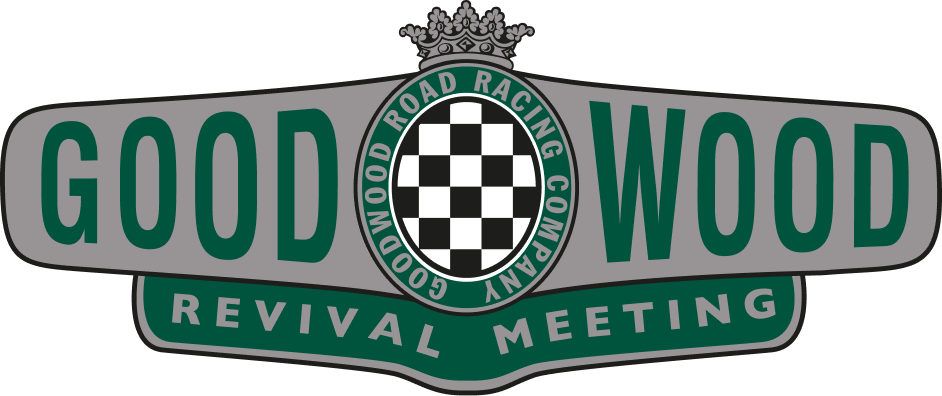Saleen S7 R – the other all-American endurance hero
In the world of motorsport America has often stood apart from the rest, favouring home soil over global competition. But, when it comes to Grand Tourers, big all-American beasts have been more than happy cross the pond and show the Europeans a thing or two.

While Ford and Corvette have been the headline stealers for decades, there’s a long tradition of smaller marques following the well-trodden path to Le Mans to make their mark. Panoz you will no doubt have heard of, but there is another all-American team that did battle around the same time.
When Steve Saleen set out to build a super-fast, mid-engined V8 road car, a racing version was always in the grand plan, a car that could race in the American Le Mans Series, the FIA GT Championship and at Le Mans. Eventually, the car you see here, a 7.0-litre monster, was born. We caught up with its owner Florent Moulin, a man very familiar with the S7 R project having bought two cars at the same time, the second of which was sat on display in his pit garage at the 2019 Spa Classic. Suffice to say the S7 R’s story is an interesting one.
“In the first days, when Steve Saleen had some finance to build the S7 programme – road cars and race cars – he had no knowledge about how to build a mid-engined car,” Moulin explains. “So he subcontracted Ray Mallock in the UK to build the Saleen.
“In 2003, Steve Saleen signed a contract with Ford to build the Ford GT – Steve Saleen built the 3,000 Ford GT road cars. They built everything – chassis, bodywork, suspension etc. They did all the development for Ford. Thanks to the connection with Ford, what he did is he got an American engineer who was working with Reynard designing LMPs to reengineer the cars. The new S7 Rs would be built in Irvine California instead of with Ray Mallock in the UK. The first Saleens are UK cars. Then, when the ‘Evo’ Saleen came out, the performance was completely crazy.”
Moulin’s S7 Rs are the first two ‘Evo’ cars, the very first cars built in California. Chassis 029R, car number 160 for the weekend at Spa, was built first, followed by Chassis 031R. Both were run initially by ACEMCO in ALMS in 2004 and 2005. “Back then ALMS was mastered by the Corvettes, the factory cars,” Moulin says. “And my cars managed sometimes to be second [and claimed] two pole positions, which for a young team was quite fantastic.”
While other Saleen S7 Rs found success in the ALMS, Moulin’s no. 66 car only competed once with ACEMCO in 2006, at Le Mans, starting in 27thposition and finishing 11thoverall as the first Saleen to survive the notoriously brutal marathon.

At the end of the year both cars lay silent and were bought by a team in the Czech Republic. It wasn’t until 2009 that they raced again, this time in the FIA GT series. “First race in FIA GT in 2009, they finished the Tourist Trophy with it ahead of the Maseratis – they were 1.2 seconds faster than the Maseratis. After Silverstone, ‘argh’, people said ‘stop, stop, we want the Maseratis to win’”. Moulin waves his arms about as if wielding a sword, detailing how the FIA added weight to the cars and restricted the engines, thus reducing the Saleen’s performance. “But they still managed to win Hungaroring. After Hungaroring the team stopped the season, and my car sat in the Czech Republic until 2015. And I purchased both in 2015 – the complete set of cars and parts and everything. We rebuilt the first car, the Le Mans car, Chassis 031R, in 2015. And 029R, we kept it running and last year completely dismantled it to properly restore it.
“First time out,” Moulin says, pointing towards the start-finish straight at Spa. “We did seven laps at a local track before coming here – timing was too short. We have the speed, now we need the reliability.”

“The track may seem extremely dangerous, with the high speed curves, but it really depends on the quality of the car. I’m used to racing GT cars from that period – Vipers, Corvettes etc. – and the Saleen, it makes the driver feel very comfortable. You feel like nothing can happen, because the car is so good at high speed – it’s absolutely amazing.
“At the opposite, the weak point of the car would be that it misses a little bit of mechanical grip. In first and second gears, the car is really not impressive. Going on the kerbs, also, it’s not impressive, but as soon as you have the downforce at work the car is flying. And the braking is amazing. It brakes like an old Group C prototype.”
And what about the heart of the beast, the massive V8 engine just a few inches away from the driver’s head? “The Saleen block comes from the Mustang. The block has been built as a 5.0-litre which has been turned into a 7.0-litre. It means the block is over-over-bored…
“[The early] Saleens, they had the engine built at Roush. The problem is they never managed to make power and reliability in these engines. And Panoz, when they developed the LMP cars, had the problems. The first two seasons they blew engines all the time – they never finished Le Mans due to the engines. At the end of ’98 Don Panoz got mad, and hired the best Ford engine builders in the US and he created Elan Technologies. And from ’99 Panoz built their own engines, called ‘Elan Engines’. And when ACEMCO purchased the partly financed the development of the S7 R Evo, they realised the Roush engine would not be a good thing. So they went to Panoz and asked if they would build for them a 7.0-litre.
“So my two cars have Elan, Panoz engines, which have nothing to do with the Roush engines – it’s totally different. The engine is beautiful, absolutely beautiful. It is still the Mustang block but everywhere inside, the liners are very specific, there are plates everywhere to reinforce the block – the engines are absolutely amazing.
“But, one of the big points of the car, the power is not that impressive, but the torque… The torque is amazing. From 4,500-6,000rpm the torque curve is flat.”
With the rear bodywork removed the Saleen’s glorious gold-lined engine bay is on full display. “It’s not for show,” Moulin says. “The problem with the Saleen is that it’s a tubular frame. The tubes are not that big. The problem with the steel is that when you reach more than 100 degrees, the steel begins to soften. And we have made some checks and the ACEMCO guys, when they built the cars with this insulation, you lose twenty to thirty per cent temperature. This helps the chassis strength. Torsion is a good point of the car. When you drive it, it is as rigid as a prototype – an 1,100kg prototype, for sure, but it drives just like a prototype, with aero, with brakes etc.”
Spa isn’t Moulin’s first race meeting of the year, having made the journey to Goodwood for the 77thMembers’ Meeting. One of his cars, an Alpine LMP2 car from 2015, took part in the LMP high-speed demo. We ask what else he has in his garage. He smiles, looking somewhat guilty. “A few… I have seven Viper GTS Rs… I have six factory cars and the Alain Prost car from the French GT in 2005. I have a Corvette C5 R GT1. I have a couple of LMPs… I have a Dallara Judd, the same as the car that won the race, with the 4.0-litre. I have a Courage Oreca LMP from 2008. And the rest is everything from the Peugeot 205 Group A… One of my top cars. I drove it two days ago – we went to the Shakedown of the Saleen and we took the 205!
“In life, you realise that you don’t necessarily need a big toy to have fun – you need a good toy! The Saleen is a big good toy and the 205 is a small good toy.”
Photography by Pete Summers and Ben Miles.
Saleen
S7
Le Mans
ALMS
GT
Motorsport
Spa Classic
Spa Classic 2019
2019
Spa Francorchamps















